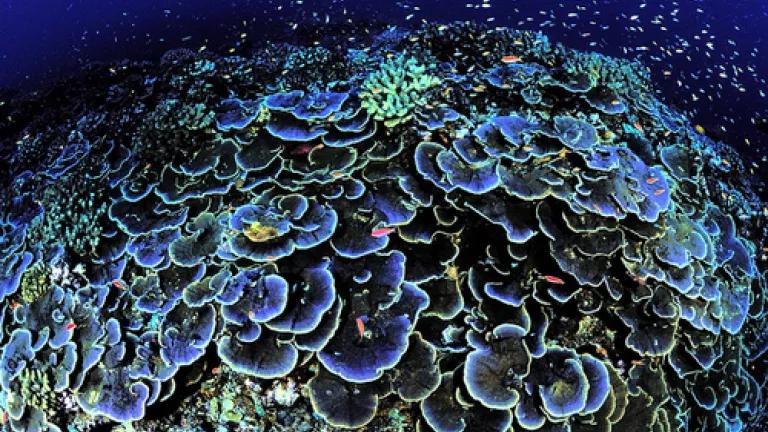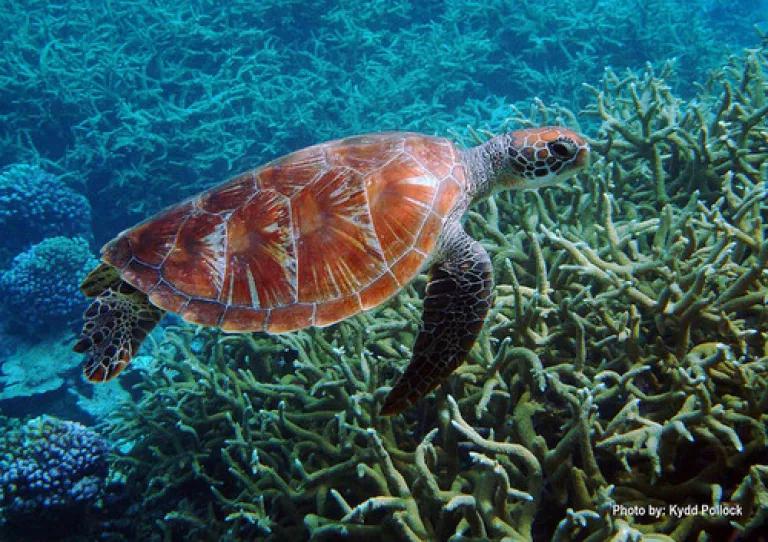
In the heat of the summer, millions of Americans are heading to the ocean for cool relief. Playing in the waves, collecting seashells, and spotting dolphins will become the stuff of countless family memories. I still remember spending hours at the beach in Cape Cod as a child, and I love visiting my father there this time of year to take in the endless vistas.
Our nation is fortunate to have so many beautiful beaches and ocean riches. To keep them vibrant—and to ensure our children and grandchildren inherit healthy seas—we must safeguard special places from the threats of pollution, destructive fishing, mining, and energy development.
America has a long tradition of protecting our marine heritage, and last month, President Obama honored that tradition by announcing plans to preserve a vast stretch of the central Pacific Ocean. By expanding the rough equivalent of a national park in the sea, the president is helping sustain the marine life so many Americans cherish.
The president’s plan is open for public review until August 15th. I urge you to raise your voice and call for the strongest protections possible for this extraordinary natural wonder.
Coral attracts fish near Jarvis Island, part of the proposed national monument.
President Obama is proposing to expand the Pacific Remote Islands Marine National Monument, home to some of the richest areas on earth for ocean life. Thriving coral gardens and massive underwater mountain ranges nurture many threatened or endangered species, including sea turtles, giant clams, pearl oysters, coconut crabs, and dolphins. Large schools of rare melon-headed whales and a potentially new species of beaked whale have been found in the region. And some of its deep coral forests include corals up to 5,000 years old.
President George W. Bush was the first to declare these pristine waters a national monument in January, 2009. Now President Obama is building on that foundation. His proposal calls for expanding the monument from the current 87,000 square miles to possibly 755,000 square miles.
This is an exciting proposal, and NRDC is encouraging the president to adopt the fullest expansion and the fullest protections possible.
Right now, the monument stretches 50 nautical miles around each of its many islands and atolls. US jurisdiction, however, reaches out to 200 nautical miles. If the Obama administration goes for the full extension, our nation would safeguard almost 250 additional undersea mountains known to be treasure troves of biodiversity and likely home to thousands of species new to science. We would also create the largest network of fully protected marine areas in the world—setting an example for other nations to follow.
Stretching the monument to the full 200 nautical miles would also protect these pristine tropical waters from future industrial development, including mining and drilling. Highly controversial mining and energy projects are already planned in similar Pacific waters controlled by other nations. The United States can chart another course. We can say some places are too special too drill or dig.
And we can do this without threatening our ocean economy. The only industry currently operating in the region is the U.S. distant-water commercial fishing fleet, and it relies on the area for less than 5 percent of its total annual catch on average. The fleet could replace the catch by making small adjustments in fishing activity—a shift that would converse this entire region as marine wilderness for generations to come.
Acting now to fully protect large, productive ecosystems is the best way to ensure longer-term survival of ocean life. America has a great opportunity before us; click here to tell President Obama to seize it. Together we can push for the fullest expansion and the fullest protection of one of America’s natural wonders.

Green turtle near Palymra Atoll, part of the proposed national monument.
Photo credits: US National Fish & Wildlife Service
